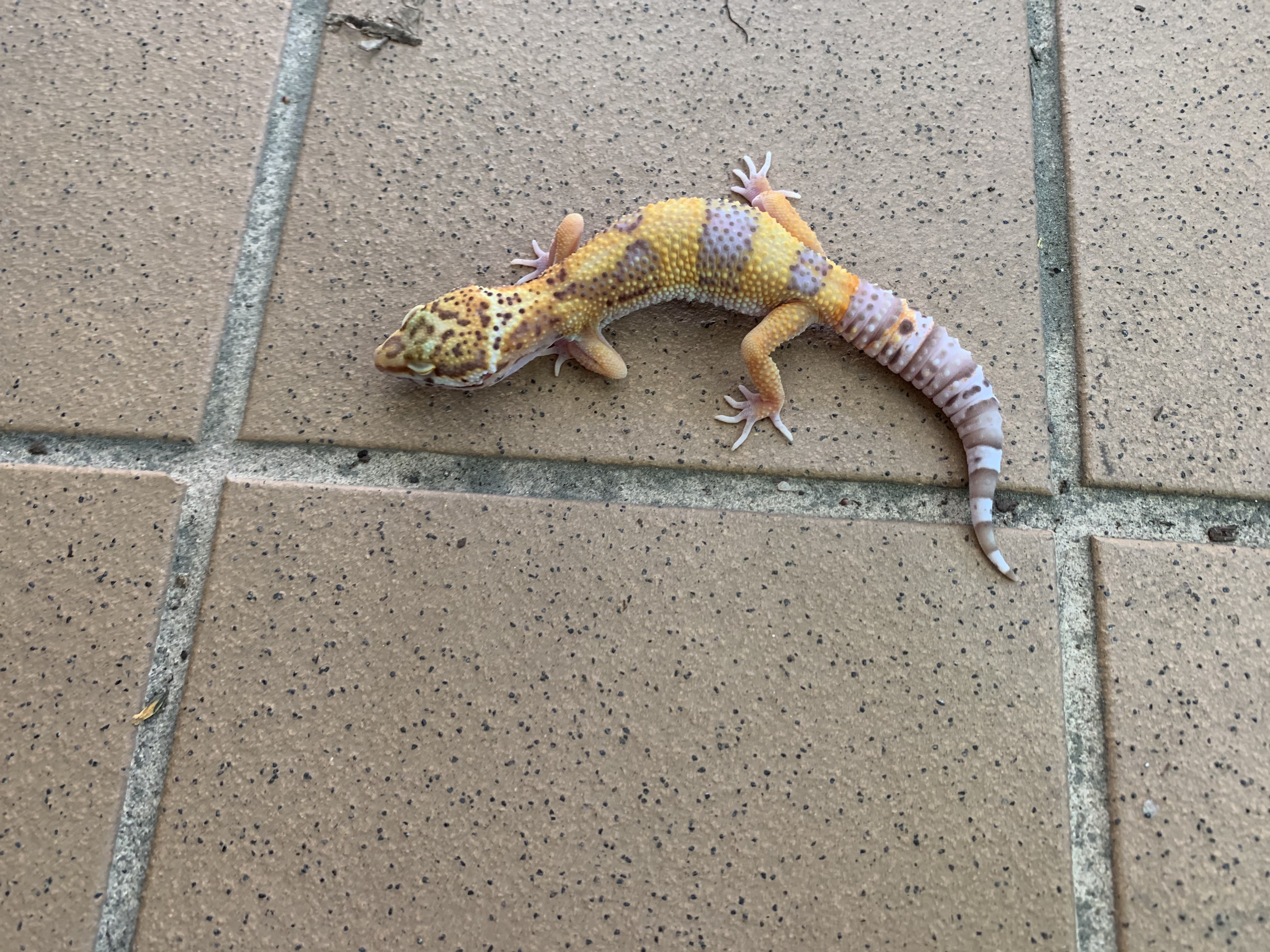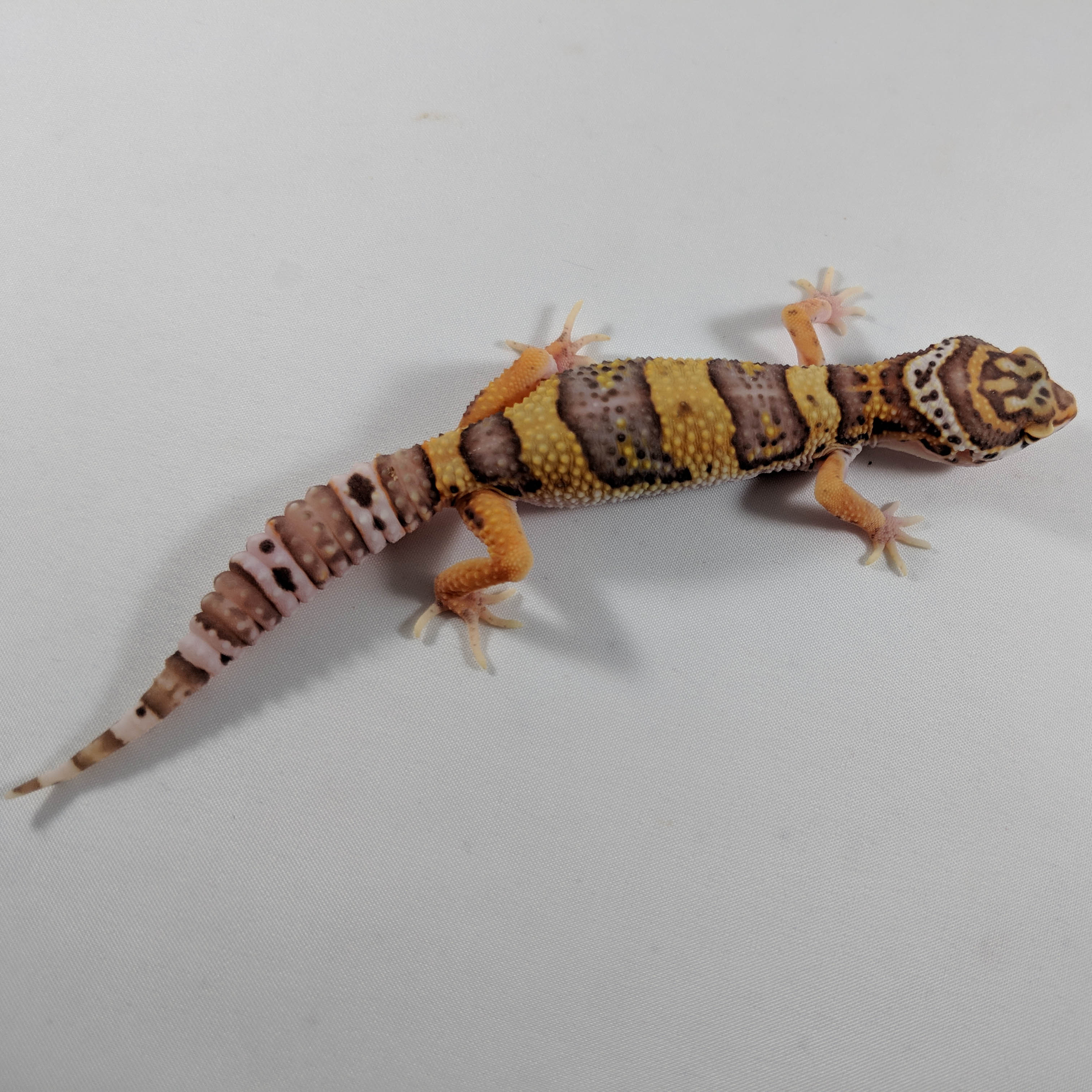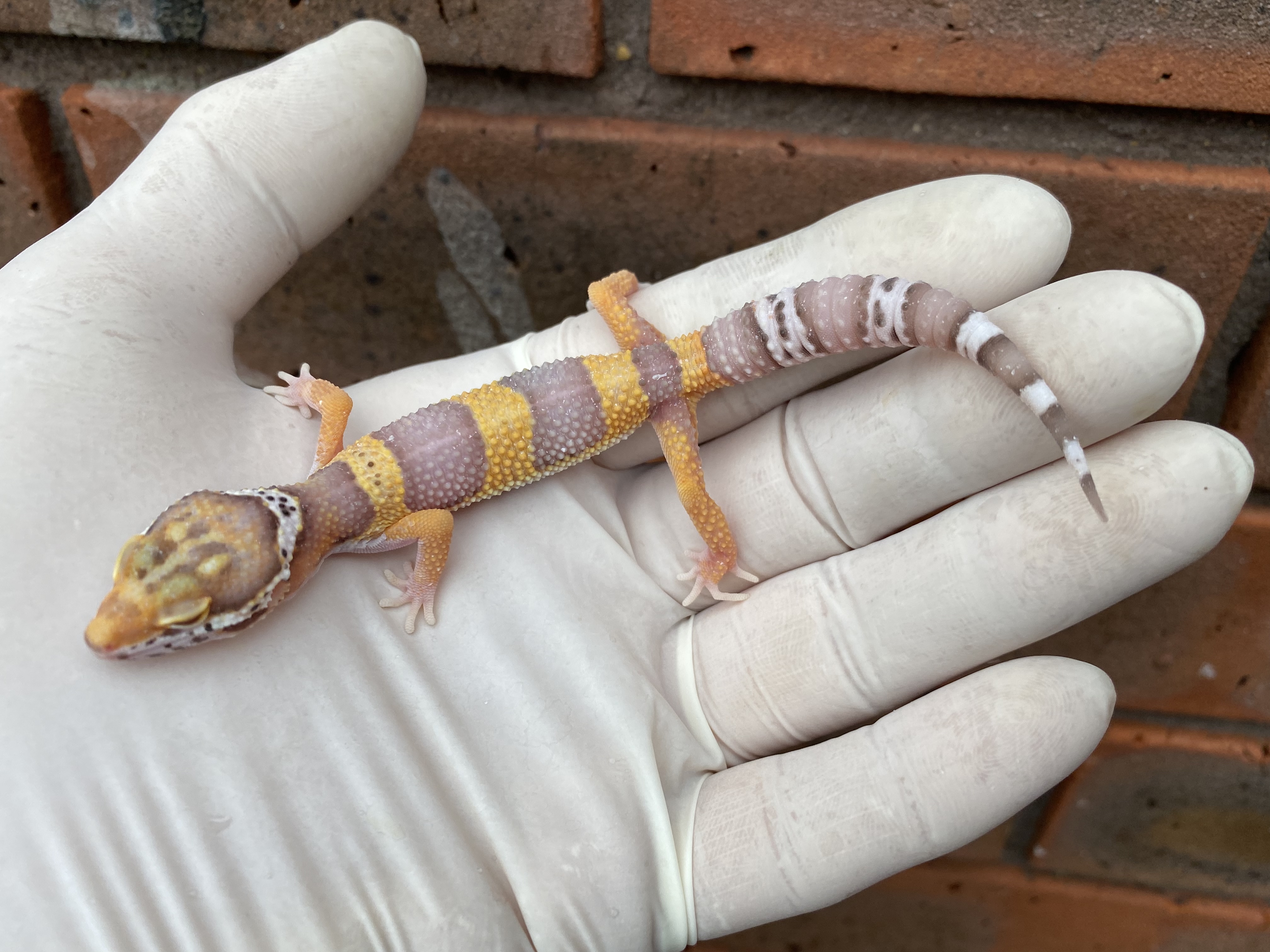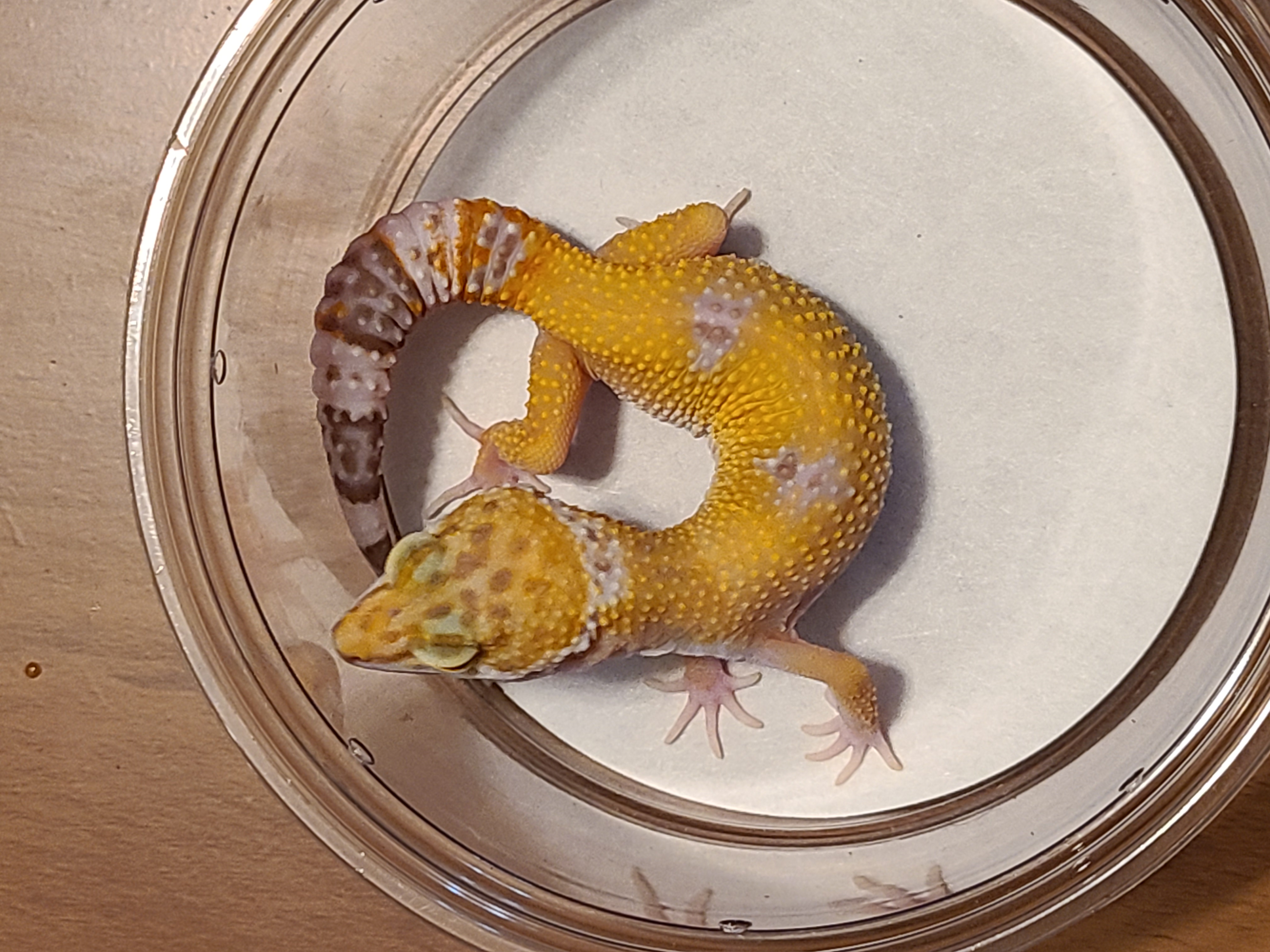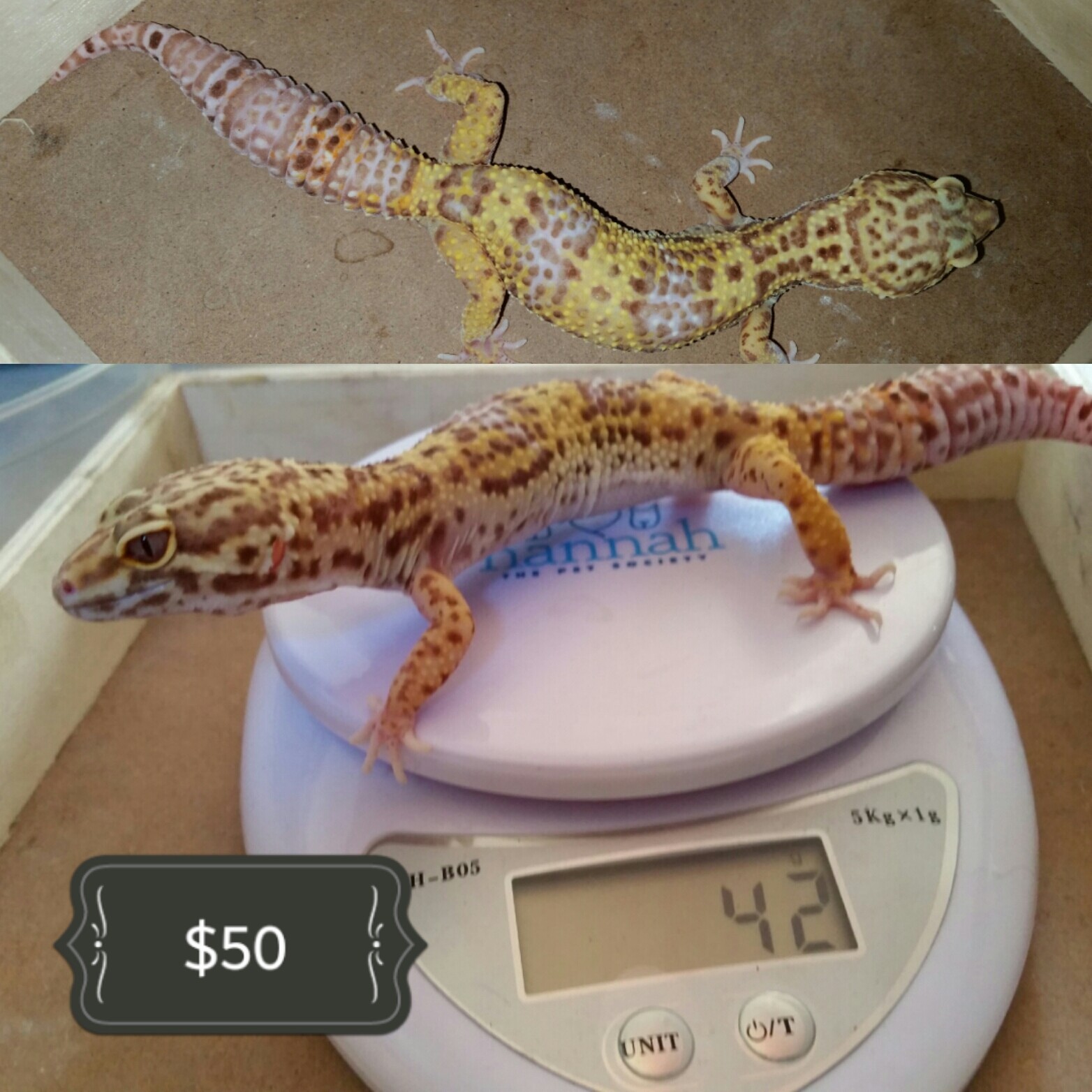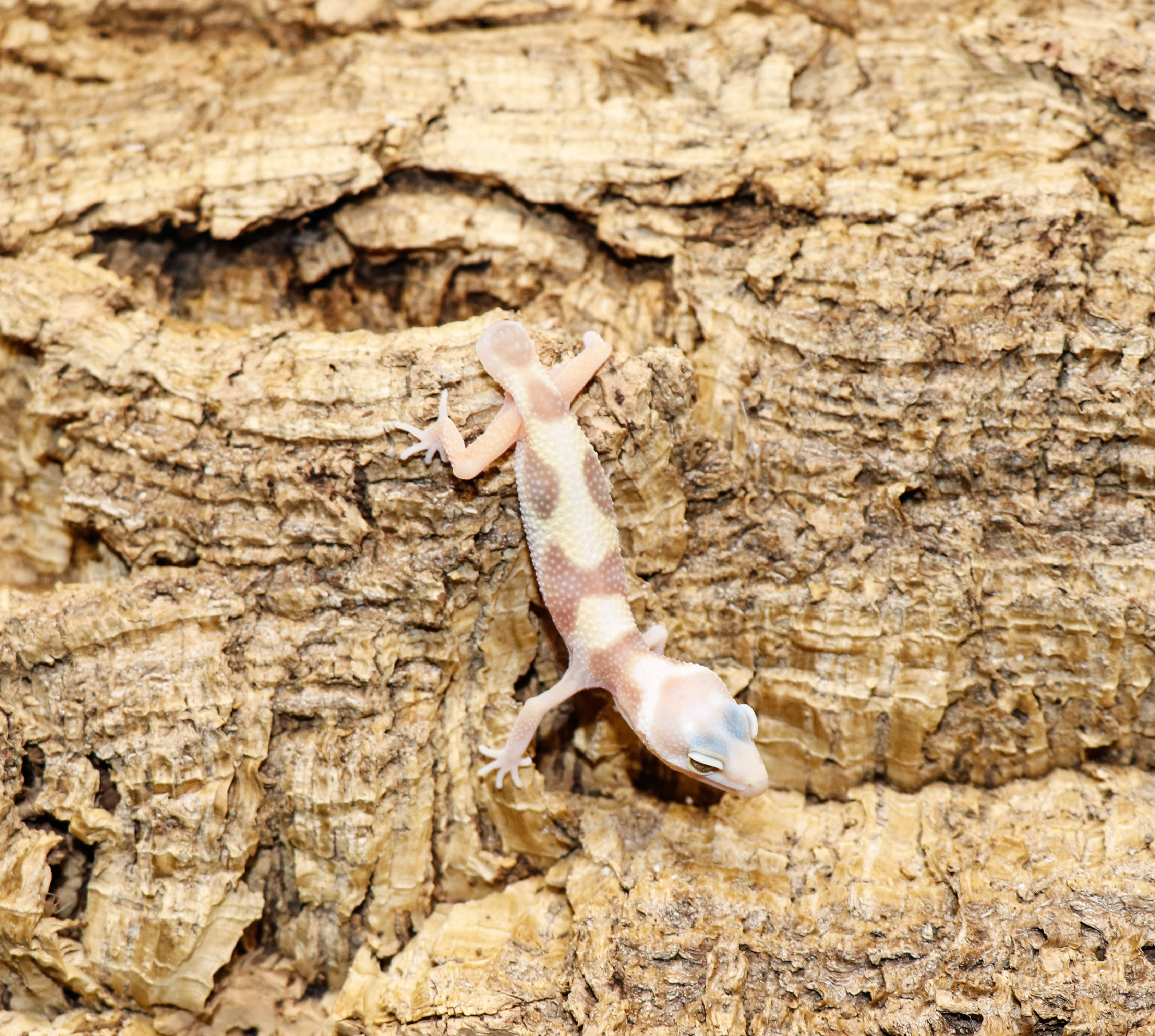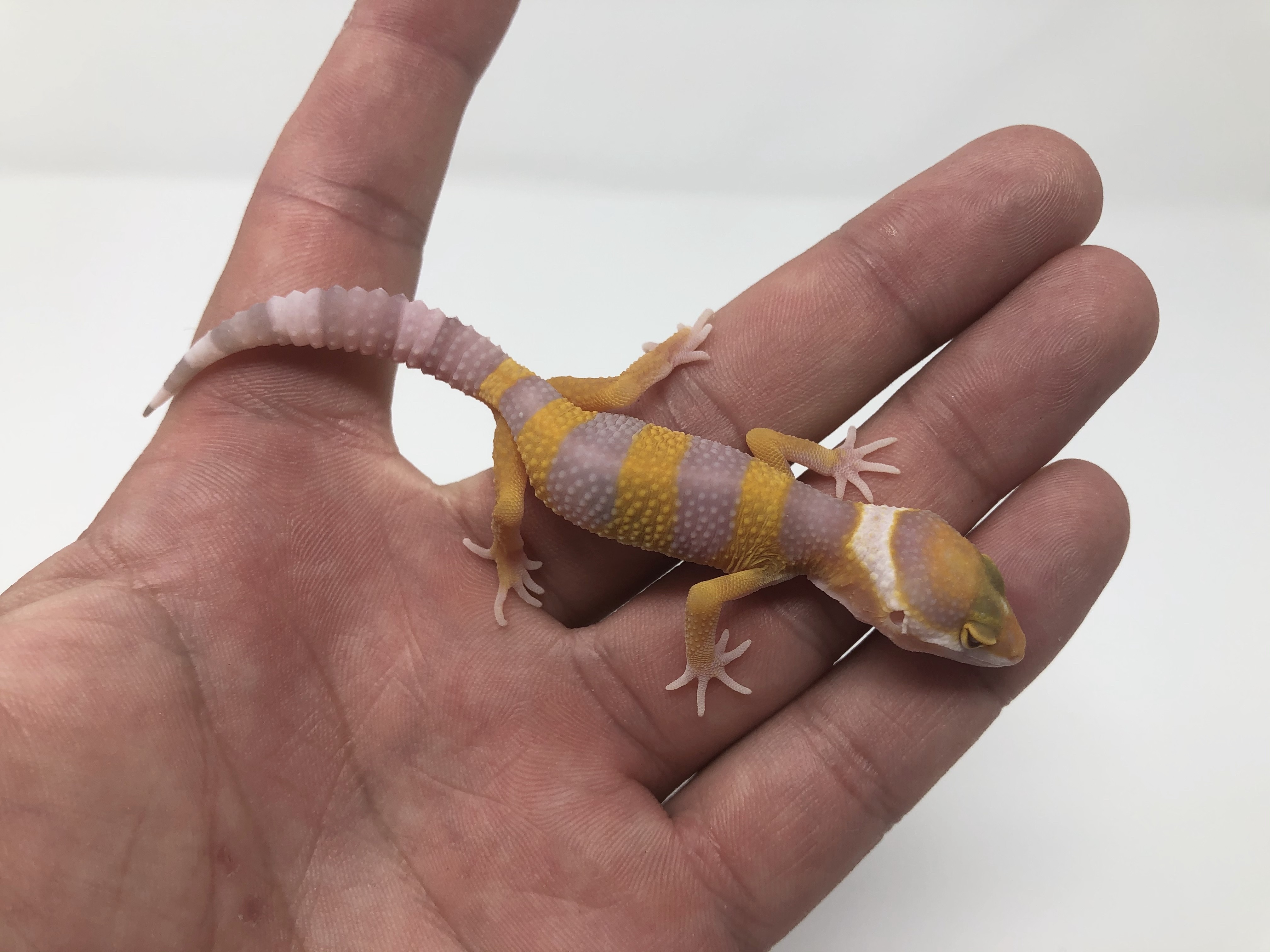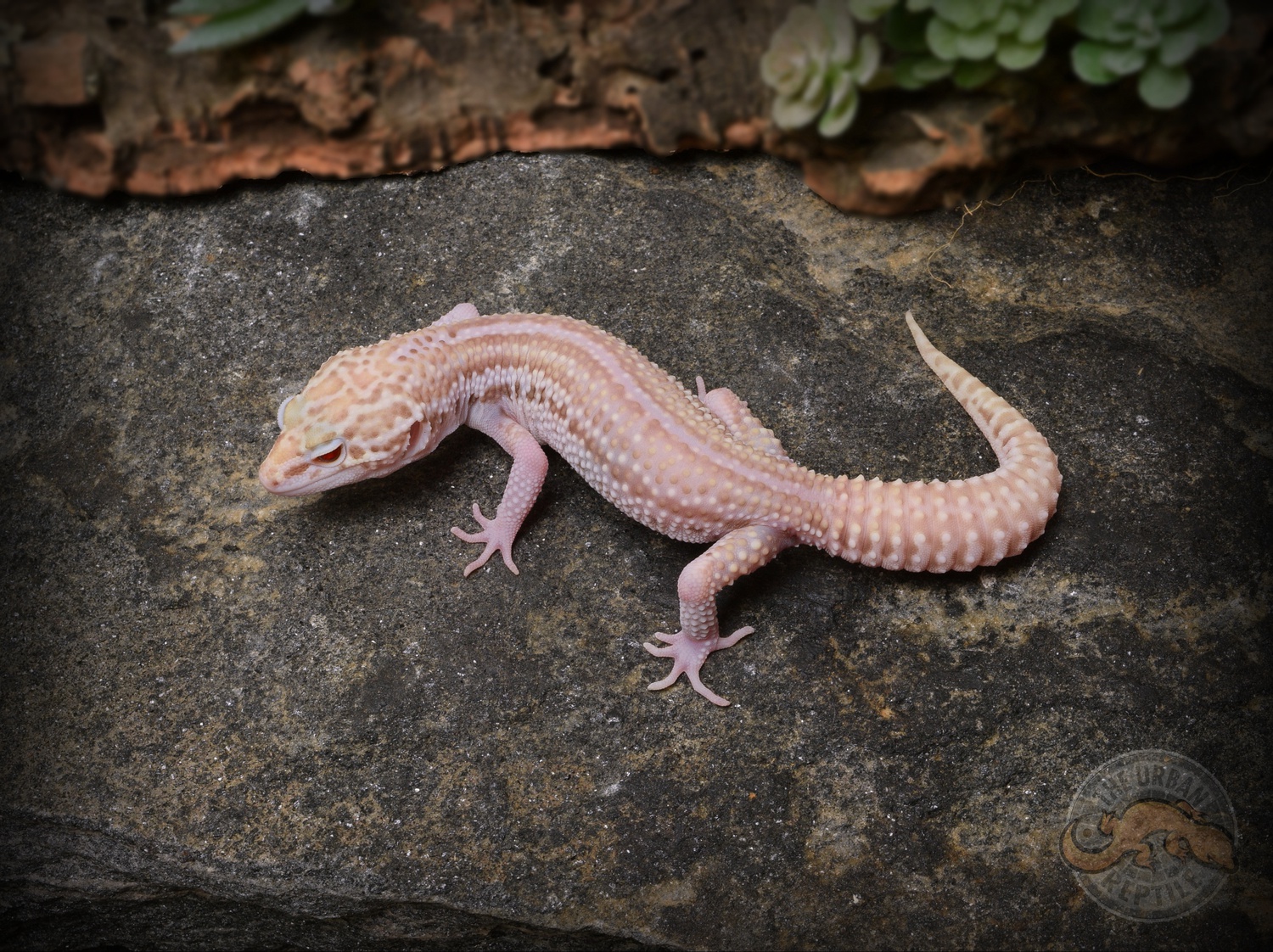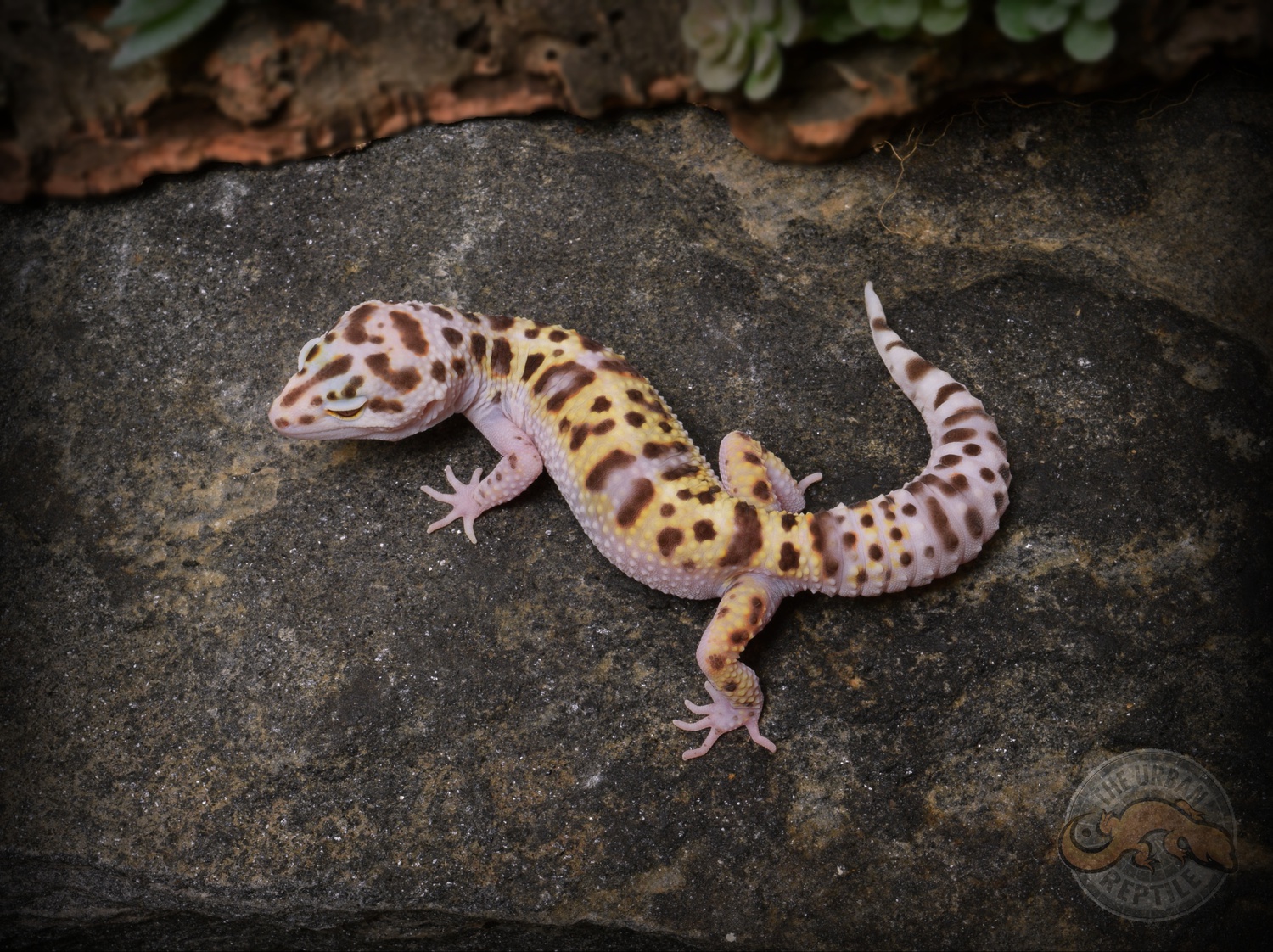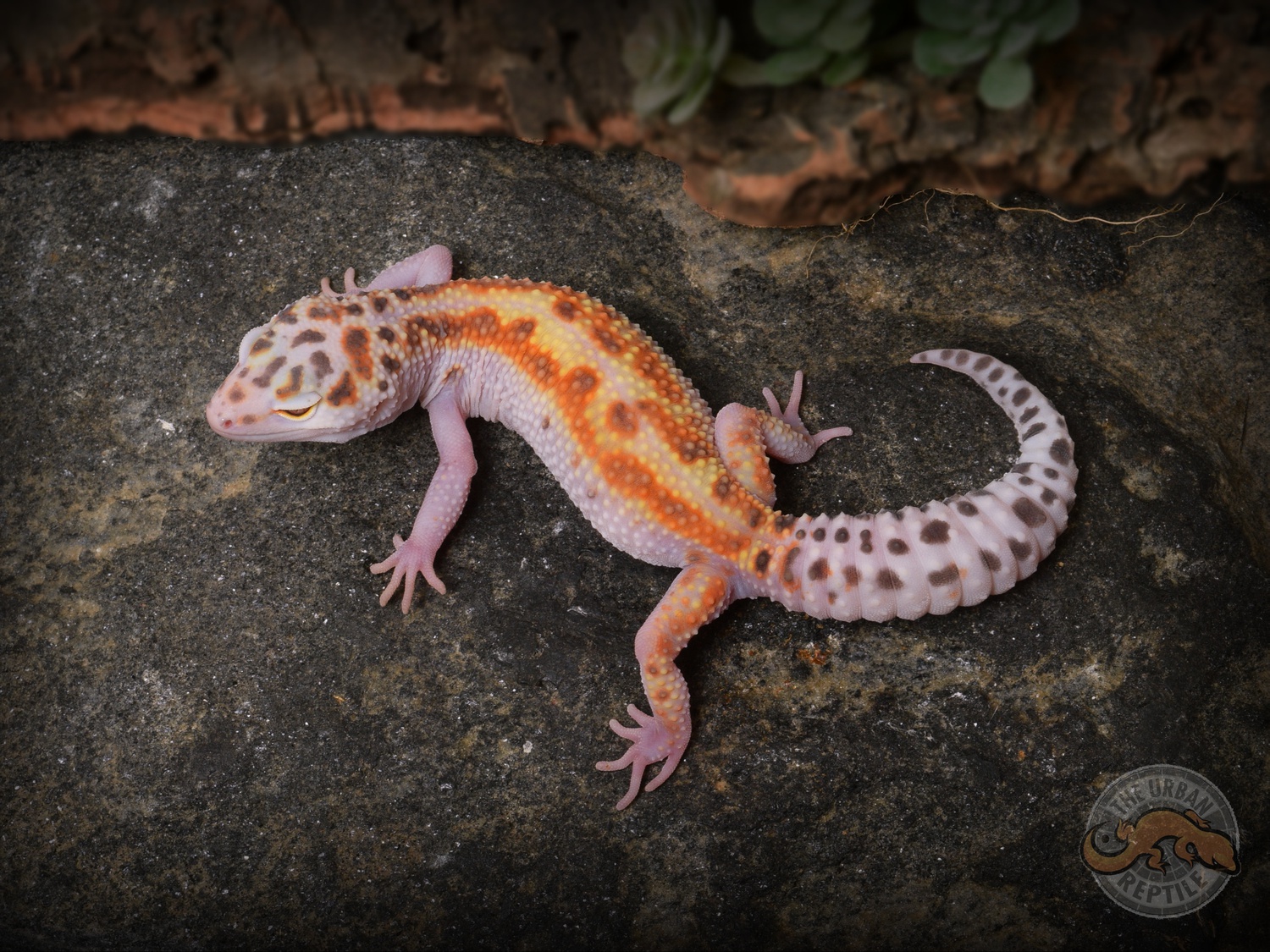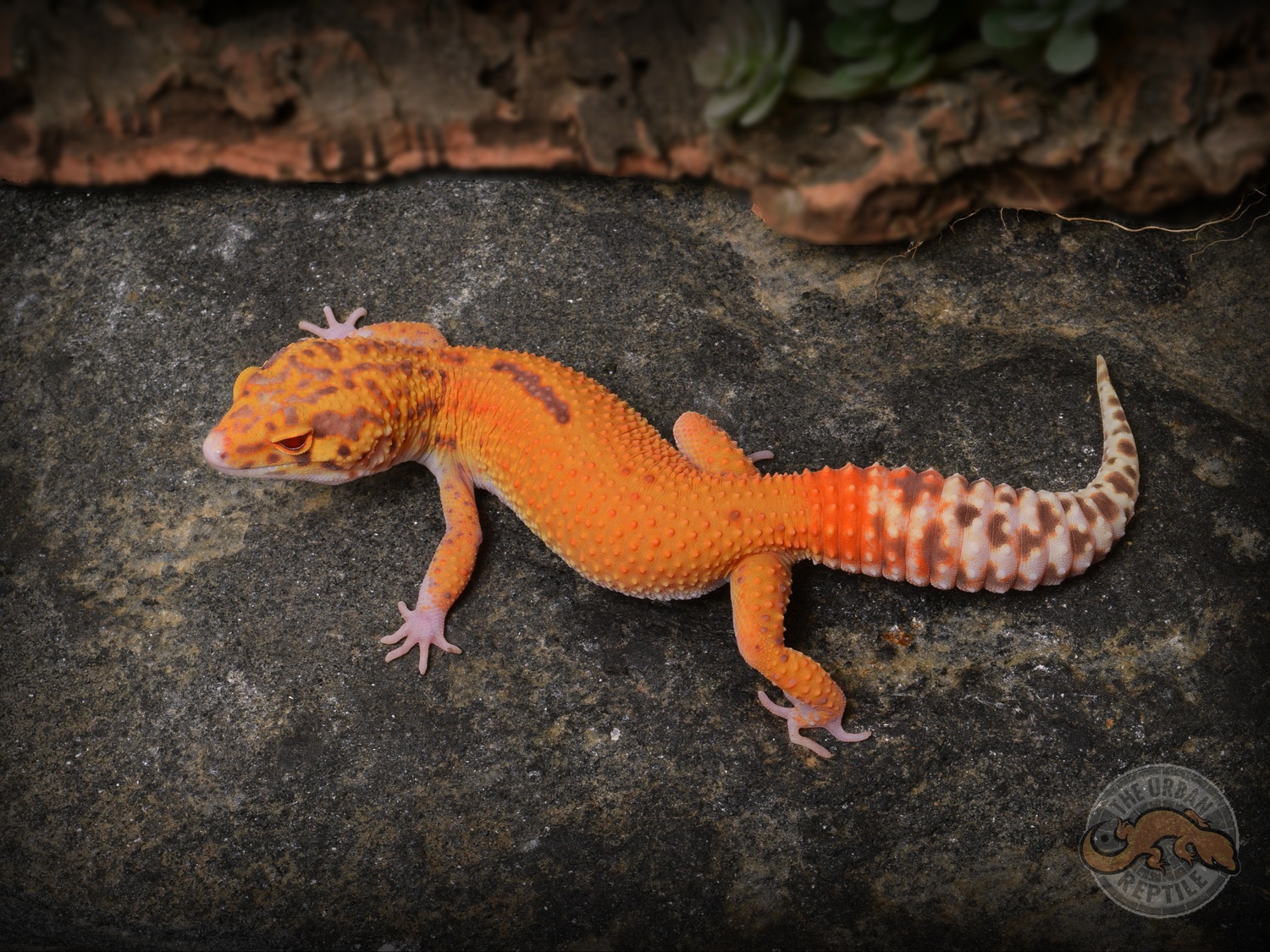Albino (Bell)
Type: Recessive
First Produced By: Reptile Industries
Aliases: Bell Albino, Albino Bell, Florida Albino
Issues: Photophobia
First Produced In: Unknown
Availability: Common
Last Updated: 2023-03-06
Do you have any suggestions or corrections for this article?
Click here to contribute feedback
About
Three distinct forms of albinism are well-established in Leopard Geckos. All three are tyrosinase positive forms, and are so similar in appearance they cannot be separated visually with 100% certainty. It is absolutely critical to be aware which line specimens to be used for breeding programs are from, use of more than one type will result in normal appearing geckos, and if bred together, these may then produce offspring of either or both types. That can be a confusing mess to sort out later! [1]
Leopard geckos have three types of pigmentation, contained in three different types of cells: melanophores, which contain black pigment (melanin); xanthophores, which contain red, yellow or orange pigment; and iridophores, which contain crystalline materals that reflect and refract light.
Albinism is usually when animals cannot produce melanin because they lack the essential enzyme tyrosinase. Albinism in leopard geckos is apparently slightly different, because they are not true albinos but rather extreme amelanistics, which roughly means that they produce virtually no melanin, but still have the potential capability to do so (because all strains do in fact have tyrosinase). Since it only affects the melanin pigmentation, albino leos can still show orange, yellow and brown coloring. [2]
The Bell Albino (also less commonly called the Florida Albino) is the newest of the three Leopard Gecko Albino Strains and was discovered by Mark Bell. [3]
Issues
Photophobia
While the word photophobia literally translates to a "fear of light”. Its not actually that you are scared of light, but instead, are incredibly sensitive to it. Animals with albinism experience photophobia due to the lack of pigment in the iris, which does not allow the eyes to filter out light.
History
The Bell strain is the most recently discovered of the three types of Albinos in Leopard Geckos.
Appearance
Head
Bell Albinos have light pink coloured eyes.
All three forms of albinism have an effect on eye coloration, although not as consistently as breeders would prefer. Some, but not all, hatchlings have distinct eyes, with reddish pupils and a pink colored iris. For reasons not understood, some hatchlings will have very dark eyes, almost normal appearing. It has been postulated by some that temperature plays a role in embryonic eye color development. Others feel some hidden genetic trait is at work.
Regardless of the reason, it is important to understand that this occurs and that it can be even more pronounced when combined with additional mutations. It is also important to realize that this red coloration will be lost as the animals mature. With growth, the iris thickens and the pinkish color of blood vessels previously showing through the thin cell layers of the iris will be obscured by the solid light golden color of the much thicker mature iris. [4]
Body
Bell Albinos bodies are typically covered in light brown spots and lavender coloration in the base.
Tail
The tail follows the same lavender colouration as the rest of the body.
Proven Lines
Neon - The Neon is an unique high-end tangerine line of the Bell albino with greatly reduced spotting. Only geckos that are from this line may be called Neons, just as a Bandit must be from pure Bandit stock to be defined as a Bandit. This morph was almost lost but still is bred in Europe and the USA. Rare. [5]
Related Traits
Combos
- RADAR (Albino (Bell) Eclipse)
- Aurora (White & Yellow Albino (Bell))
- Bell Blazing Blizard (Albino (Bell) Blizzard)
- Bell Hybino (Albino (Bell) Super Hypo)
- Predator (Albino (Bell) Eclipse Murphy Patternless)
- Stealth (Enigma Snow (Mack) Albino (Bell) Eclipse)
- Super Stealth (Super Snow (Mack) Enigma Snow (Mack) Albino (Bell) Eclipse)
- White Knight (Albino (Bell) Blizzard Eclipse)


